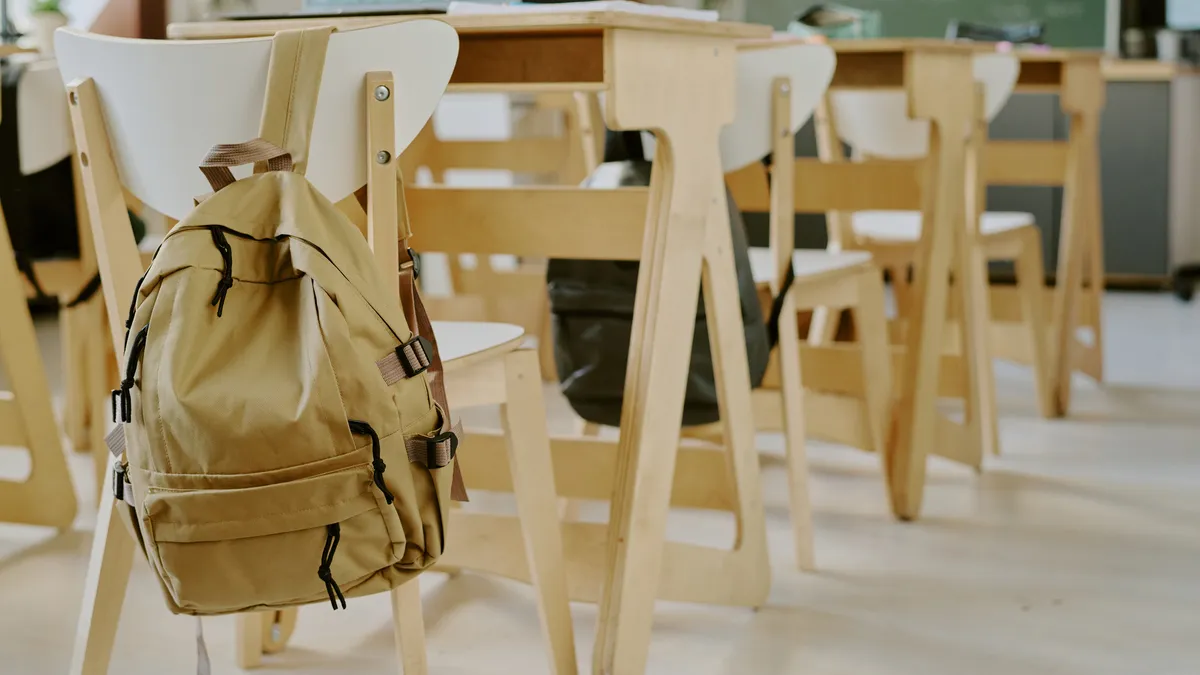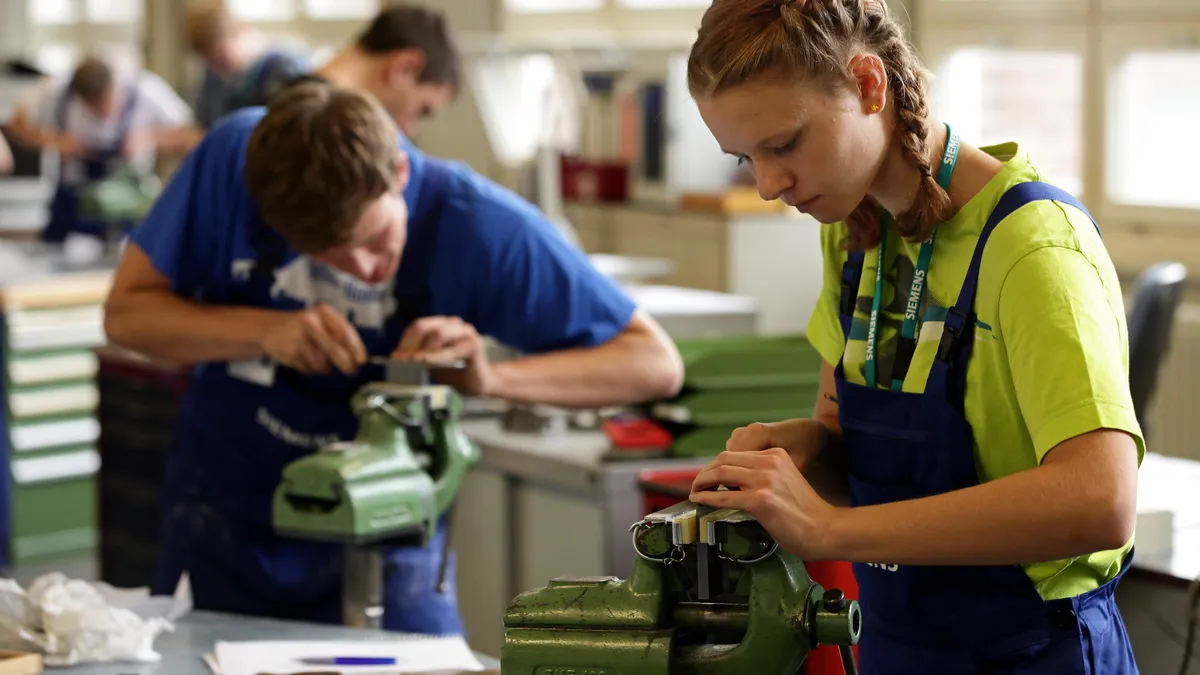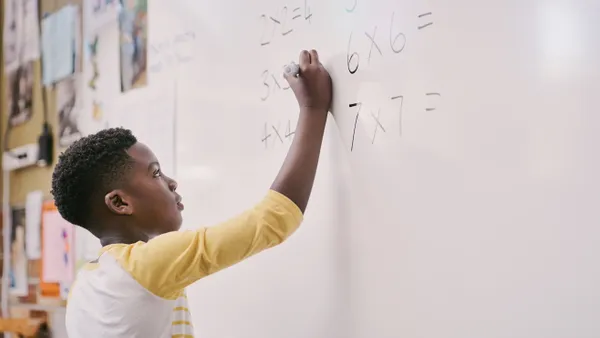With the school year in full swing, there’s no scarcity of challenges education leaders will be working to overcome in the 2019-20 school year.
Districts are facing teacher strikes, administrators are wading through various curricula to fit students’ evolving needs, and leaders are addressing the evergreen question of how to close the revolving door of teachers.
Here's a look at five major challenges districts are facing and steps they're taking to address them.
Balancing school security with positive learning
Challenge: Perhaps as a result of the ongoing emphasis on safety, schools are hardening buildings to keep students safe. However, in the process, schools risk turning the environment into one that more closely resembles a prison and can serve as a reminder of existing trauma.
Janet Robinson is a former superintendent of Newtown Schools in Connecticut and current superintendent of Stratford Public Schools in the same state. She told Education Dive in August that while practicing lockdown drills and increasing security are a part of a changing school environment that emphasizes safety, these measures “don’t help students feel secure.”
At a congressional briefing in June, student advocate and shooting survivor Lauren Hogg pointed out the need to “find a balance.”
“When you put in security checkpoints, the culture of violence increases,” Hogg said. “Feeling like violence is to be expected is something that we don’t deserve.”
Solutions: In the rush to increase tangible security measures like installing metal detectors and surveillance cameras, experts say administrators should be mindful of putting in place equally, if not more, effective social-emotional prevention strategies.
Investing in school counselors and mental health professionals, emphasizing communication and trust between students and staff, training teachers and school leaders on social-emotional learning, hiring an SRO in tune with community needs, and offering trauma-informed mental health services, among other things, can go a long way in building a positive school culture that keeps violence at bay while minimizing a prison-like environment.
Teacher strikes
Challenge: With teachers in a number of districts strike-ready and greater union advocacy pushing administrators to address needs "beyond traditional contract issues," resuming business as usual after a strike can be challenging.
The break in instruction can make it difficult for students to immediately get back into academics. Strikes can also be polarizing for a district, and principals are often left picking up the pieces following a work stoppage.
Solutions: Districts are looking for ways to continue despite teacher absences during a strike. For example, during the Los Angeles teacher strike earlier this year, district administrators and school leaders continued the school day by teaching students themselves.
Meanwhile, principals can work to ease potential residual tensions by focusing on creating collaborative and trusting work environments, valuing teachers’ views and addressing their concerns. It is also easier to foster a positive school culture following a strike if principals build on a shared commitment to serve students needs, acknowledge teachers’ involvement in protests and are sympathetic to their concerns.
Teacher shortages
Challenge: High turnover rates and shortages continue to pose challenges for many districts. A 2018 Gallup poll found more than half of superintendents (61%) chose teacher retention as the greatest struggle from a list of challenges facing school districts. In previous years, almost every state had teacher shortages in major subject areas.
Solutions: With the trend continuing into this school year, schools are looking for ways to attract and retain quality teachers. Building a career ladder for teachers to pursue, providing opportunities for collaboration and facilitating development, and creating a supportive environment that encourages creativity can be key in creating incentives for teachers to stay in the profession.
In addition, multiple studies have shown that thorough teacher preparation can significantly reduce attrition. To improve the quality of teacher preparation, superintendents can work with higher education institutions that offer teacher preparation programs and demand more rigorous training.
"Go to the institution that has been supplying you with teachers for years, and say to them, ‘Here’s what I need for you to do for me,'” Marc Tucker, founder of and former president and CEO for the National Center on Education and the Economy, told Education Dive in July. "The school districts and superintendents have enormous market power.”
Leveraging that power can encourage institutions to amp up their curriculum for teacher training programs and meet hiring standards. "Superintendents have gotten their teachers from the same institutions for years," Tucker said. "They complain about the teachers they’re getting, but they don’t stop taking them.”
Leadership pipeline and succession planning
Challenge: According to research, 35% of principals stay in their positions for less than two years. Like their teacher counterparts, principal turnover is boosted by lack of preparation and professional development, low compensation and lack of support, among other things.
“Better-prepared principals, including those who have had internships and/or mentors, are less stressed and stay longer, even if they are in high-need schools,” write researchers Stephanie Levin and Kathryn Bradley in a report from the Learning Policy Institute.
Solutions: Encouraging professional learning networks, ensuring sufficient salaries, and providing both preparation programs and in-service trainings can go a long way in making principals more likely to stay in their jobs.
Investing in pipeline preparation programs, like Maryland's Prince George’s County Public Schools did with its revamped initiative, can also make a difference. Districts can do this by working closely and building relationships with local universities.
For more information on how to build and sustain leadership pipelines, take a look here and here.
Curriculum and assessment
Challenge: Many districts are feeling the pressure to meet accountability metrics while also trying to get creative with approaches to curriculum and assessment. With standardized tests becoming increasingly outdated, and end-of-year testing possibly on its way out the door, the ways in which students learn and demonstrate achievement are changing.
"It doesn’t make sense to operate from a point of rote memorization," said Don Haddad, superintendent of St. Vrain Valley School District, on a panel earlier this month. "Our children will have to be agile, and they will have to adapt to an environment that is going to rapidly change.”
Solutions: Many schools are shifting to alternative methods like project-based assessments that are scored based on creativity and “through-year” testing, a model reflecting growth and proficiency levels instead of being summative.
In addition to assessment changes, traditionally Eurocentric curricula are being replaced by more inclusive material, and schools are promoting soft skills to prepare students for job market needs. Districts are also partnering with community organizations and employers to give students more hands-on and real-world experiences.
In California, for example, Desert Hot Springs High School has partnered with Grid Alternatives’ Solar Futures program to offer students solar industry knowledge and potential opportunities for credentials that will prepare them for the workforce. In Tennessee, Hixson High School partnered with Tennessee Wildlife Resources Agency to give students an opportunity to experience land management responsibilities, conduct conservation projects, study agriculture and ecology, and learn how to operate tools.





















